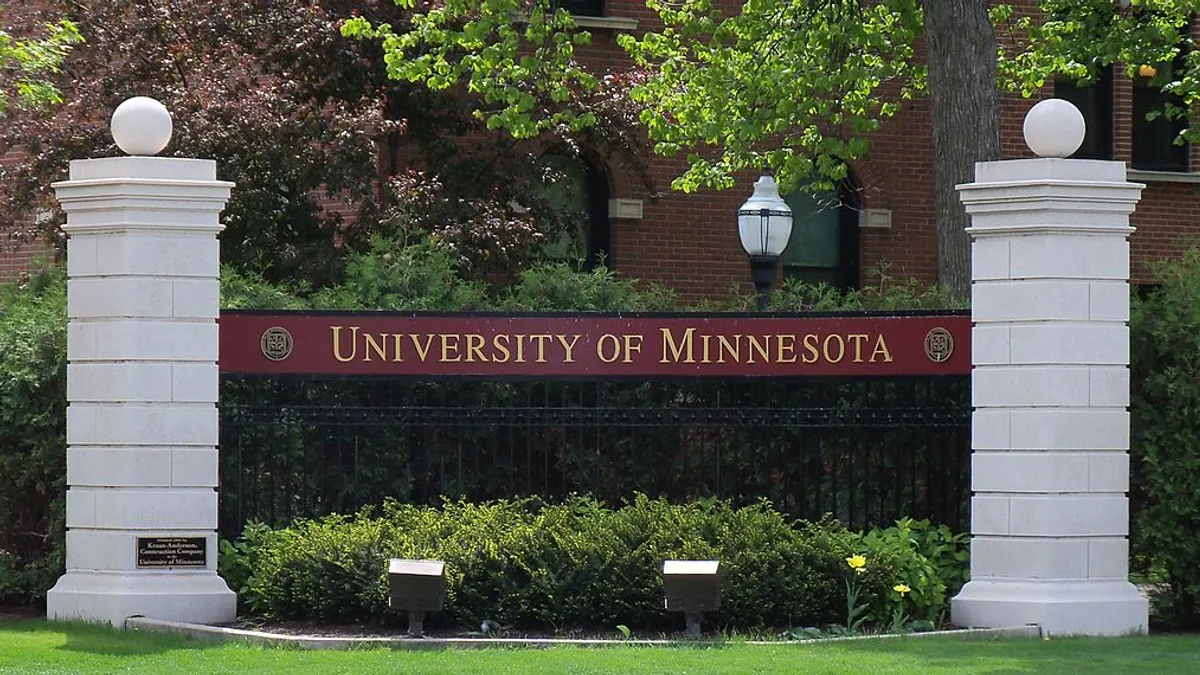Across the country, the coronavirus has shattered college students' livelihoods. Most of those who lived on campus were forced to evacuate dorms. Some students, especially those without adequate internet access, were hamstrung with a hectic shift to online instruction. Students and their families lost jobs, which could prove financially ruinous to those who were already strained.
Congress recognized these challenges when it passed the most recent coronavirus stimulus package, earmarking more than $6 billion of aid for colleges to give directly to students. The amount each college gets is determined by how many full-time students it enrolls and the share of those students who receive Pell Grants. The U.S. Department of Education said institutions could claim the money immediately, though higher ed groups say a lack of direction from the department has slowed its delivery.
The Coronavirus Aid, Relief, and Economic Security (CARES) Act gives colleges wide discretion for how they distribute the money among students, with the only statutory requirement being that the funding address disruptions created by the coronavirus. Education Secretary Betsy DeVos, in a letter to college executives, gave minimal advice, urging that they prioritize students "with the greatest need."
That leaves colleges with several questions: How many students should they try to assist, and how much money should they give each one? What's the best way to get it into students' pockets? Some campuses enroll tens of thousands of students, and it is improbable to contact all of them to determine who is in financial distress.
The answers will vary by campus, but administrators can look to existing emergency aid systems to figure them out, student affairs professionals say.
What's in place now?
Many campuses already have emergency aid funds that they use to cover students' short-term hardships, such as if they couldn't afford car repairs or a parent died and they needed to fly home unexpectedly, Kevin Kruger, president of NASPA -- Student Affairs Administrators in Higher Education, told Education Dive. Colleges use these pots of money for one-off incidents; they are not meant to replace traditional financial aid, he added.
Colleges' interest in emergency aid programs has grown in recent years. In 2016, NASPA published a landscape study of the types of funds colleges offered. The group identified more than 520 campuses at the time with emergency aid programs, two-thirds of which had been active for at least five years.
The aid offered varies and includes emergency loans, grants that are either unrestricted or for certain expenses, and food pantries. The latter has become more popular on college campuses as the issue of food insecurity gains attention.
Colleges pay for these programs primarily through foundation money and individual donations, though they also pull from their operating budgets, according to NASPA's report.
The institutions that already laid the groundwork for these types of systems — designating employees for the work and coming up with a way to get students the money — will have an advantage, Kruger said. Many colleges turned to their emergency funds to help students before they knew the CARES money was coming.
"Many campuses are not starting from scratch on this," he said. "It should be easy to disseminate the funds in an effective way."
How to distribute CARES money
Because administrators have latitude for how they give out the CARES funding, they can decide to give a larger number of students each a small amount of money or target fewer students with bigger sums. The decision hinges on the campus' needs.
For typical emergency grants, more than a third of colleges NASPA surveyed gave out $1,000 or more. For the CARES grants, DeVos suggested in her letter to college presidents that institutions shouldn't exceed the maximum Pell award per student, which for the 2019-20 academic year was $6,195.
DeVos also wrote that if colleges determine their students don't need the funding, that they consider donating it to neighboring institutions — an unlikely scenario given the widespread economic fallout, Kruger said.
The Hope Center, a research and advocacy group based out of Temple University, in Philadelphia, published an extensive guide for distributing the CARES funding. Its recommendations include a basic application process that minimizes red tape for students, as well as reducing administrative burdens on staff.
While filling out a lengthy application can deter students, institutions should also avoid interviewing them or having them explain their circumstances, it notes.
"[T]hese may be intended to make the process more inclusive and accurate, but it also demands that the student ‘perform' their poverty to receive support," the center wrote.
What one college is doing
At St. John's University, a Catholic institution in New York, officials require little vetting for their emergency grants. They merely confirm a student is enrolled, said Kathryn Hutchinson, the university's vice president for student affairs, in an interview with Education Dive.
It serves a high number of needy students, with about 40% of full-time freshmen receiving Pell Grants, according to the latest available federal data.
NASPA has cited St. John's for having a particularly robust and successful emergency aid program. Similar to what the Hope Center advised, students seeking support through the usual emergency grant process fill out a simple application. Hutchinson said the university doesn't ask for much information in the application because financial aid records (the FAFSA) are dated and may not reflect a student's current circumstances.
Staff members also touch base with students to figure out whether they should connect them with other on- or off-campus resources, Hutchinson said.
If a student is struggling to pay for medication, for instance, the university could connect them with a pharmacy that offers discounted prices and the student could avoid dipping into the money the university gave them, Hutchinson said.
Distributing the CARES money is a bigger lift because the university needed to evaluate its 21,000 or so students, she said. It plans to email them a survey asking if and how they were struggling, such as caring for a parent or grandparent or if they lost their job. It will use that information to figure out how to divide the money among students, Hutchinson said.
Historically, the university deposited emergency aid directly into students' bank accounts. For those without one, it puts the money into gift cards — either a general purpose one or from a store such as Target that carries a range of essentials.
Officials will likely use direct deposit for the CARES money but will also cut a check for students who need it, Hutchinson said. They are trying to promptly deliver the funding while spotting barriers such as not having a bank account, she said.
Before they knew federal funding would be available to help students put out by the virus, St. John's officials tapped alumni and donors to grow its emergency fund. At its recent peak, the fund had about $200,000, almost all from donations, Hutchinson said.
The university is still mulling how to handle long-term effects of the virus, especially knowing that many more students will likely now be in tough financial straits. A second wave of CARES funding, more than $6 billion, will be given to institutions to handle their own expenses, but Hutchinson said St. John's hasn't finalized how it will use the money.
"One thing that we always keep in mind, and that is really important, is that we're really thinking about the dignity and respect to the students," she said.















